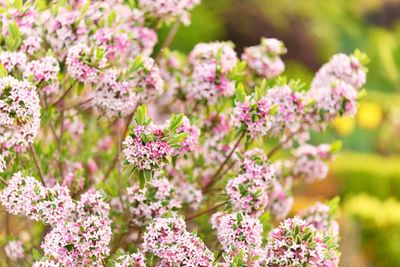Plant Care for Daphne
Daphne plants are winter to late spring bloomers suited for USDA zones 7 to 9. They have a very slow growth rate and are evergreen in all but the coolest climates. On average, a species of daphne will grow 3 to 4 feet (1-1.2 m.) tall with a 4-foot (1.2-m.) spread. They have a mounding form and thick leathery sword-shaped leaves. The plants do not tolerate moving, so you should be sure about their location at installation. Place them along a pathway or near a window at the foundation so you can enjoy their scent when the clusters of tiny flowers appear. Daphne needs a sunny to partially sunny location with well drained soil. The shrubs do not like dry roots, so you will need to water them every two weeks, deeply. You can conserve moisture by working in three inches (7.5 cm.) of compost to a depth of 12 inches (30 cm.) at planting. Also, spread an inch (2.5 cm.) of mulch around the base of the plant. Fertilize with an all purpose fertilizer in spring after the plant has bloomed.
When to Cut Back Daphne
Does daphne need pruning? The plant doesn’t require cutting to enforce a nice compact shape, nor does it require pruning to control a wild growth habit. In other words, it doesn’t need pruning for its health or any other reason. Daphne plant pruning is generally to remove broken or errant branches. Trimming the shrub is not part of annual plant care for daphne. The best time to do any cutting is after the plant flowers, so you avoid cutting off the buds. This would be early spring when pruning winter daphne and late spring for other varieties.
How to Prune Daphne
As with any pruning project, use clean, sharp cutting implements. Daphne rarely get wood large enough to require a saw, so loppers and a bypass pruner can usually handle the job. Prune after the plant has flowered and make cuts below any growth nodes or buds. Cut stems at a slight angle, which will help force water away from the cut edge and help prevent rot. Pruning winter daphne (Daphne odora), the most fragrant of the varieties, requires the same method. Tip prune after bloom to remove spent flowers.
